All essential oils are potent, they are absorbed readily across the blood brain barrier. They release chemicals in the brain such as endorphins that relieve pain and dopamine that provides the feel good factor.
DO NOT use essential oils directly on skin, combine with Grapeseed or Sunflower oil for massage or in a bath mix with shower gel, full fat milk or oil.
Brian, from The Longhouse Team, blending tips;
Recorded here at the hospice, these guided relaxation tracks are available for everyone to listen to. Just click the track you would like to listen to and and let yourself unwind...
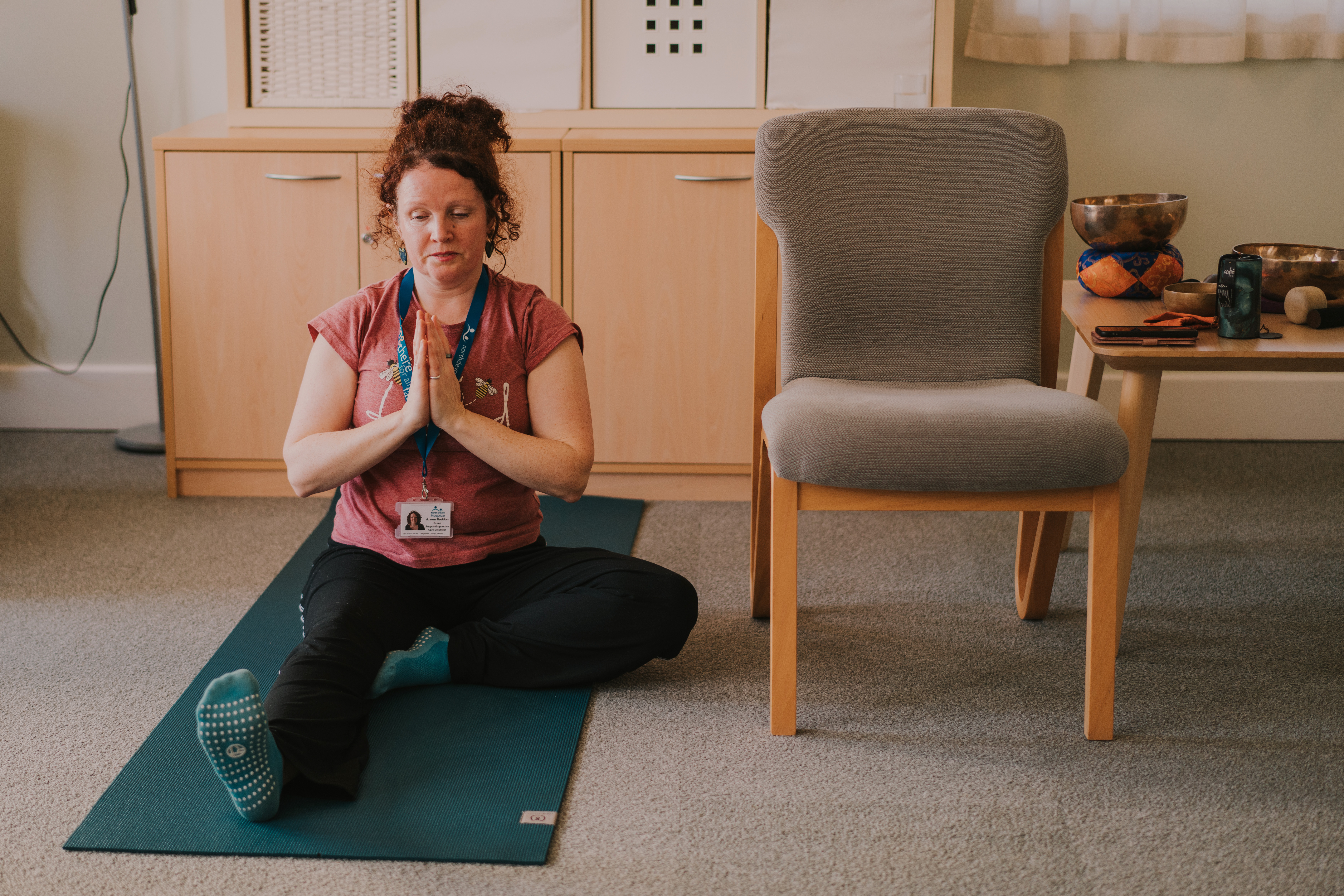
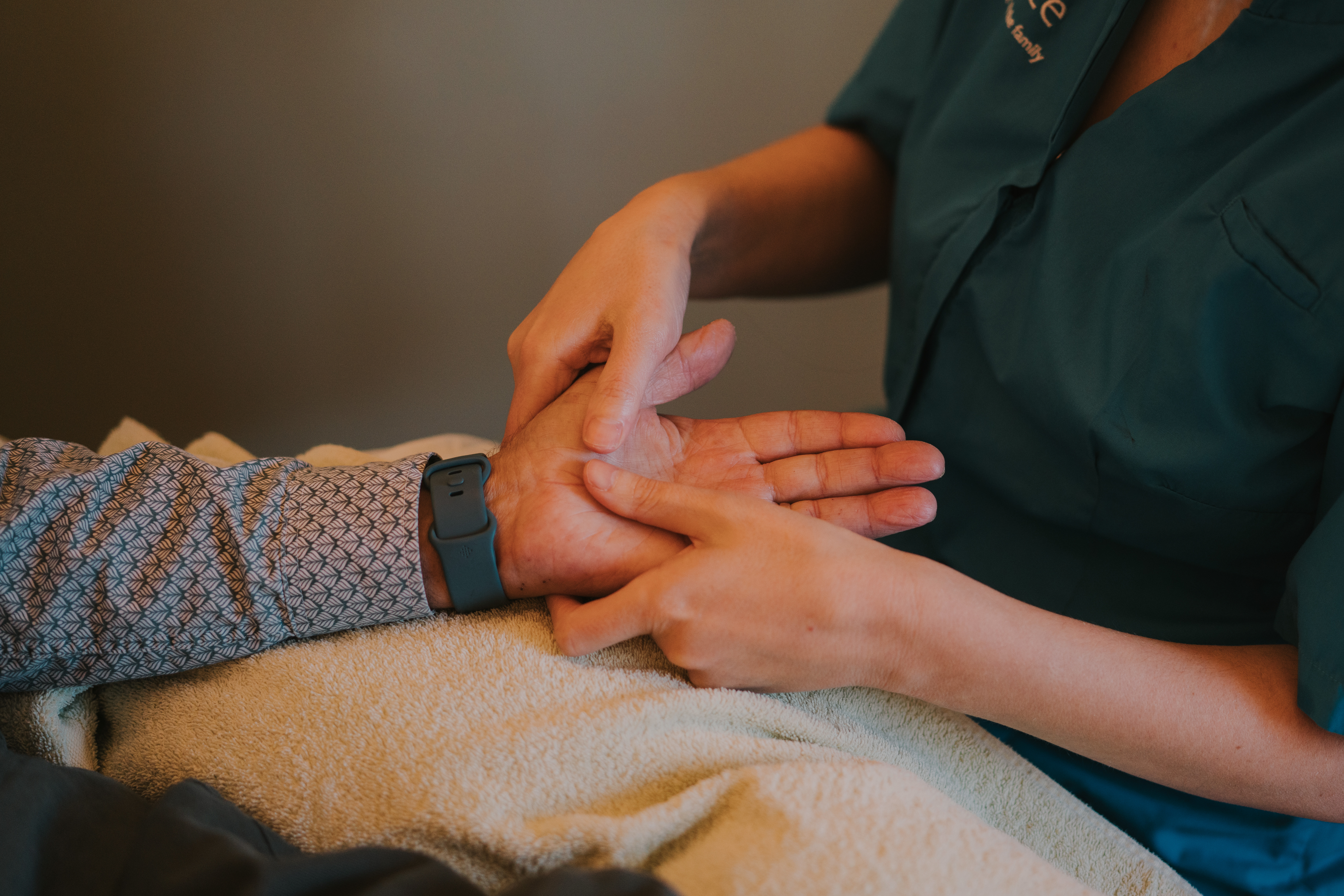
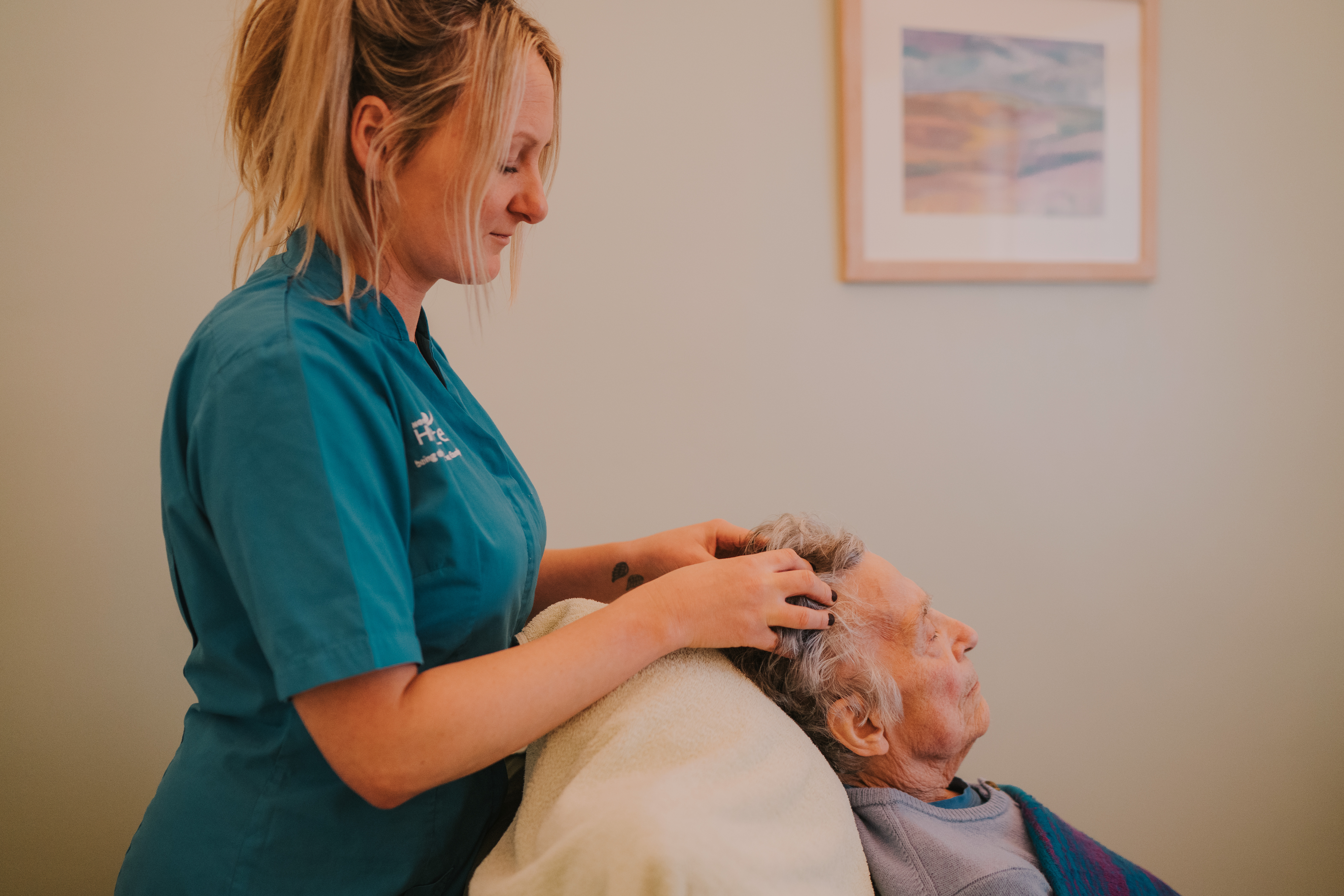

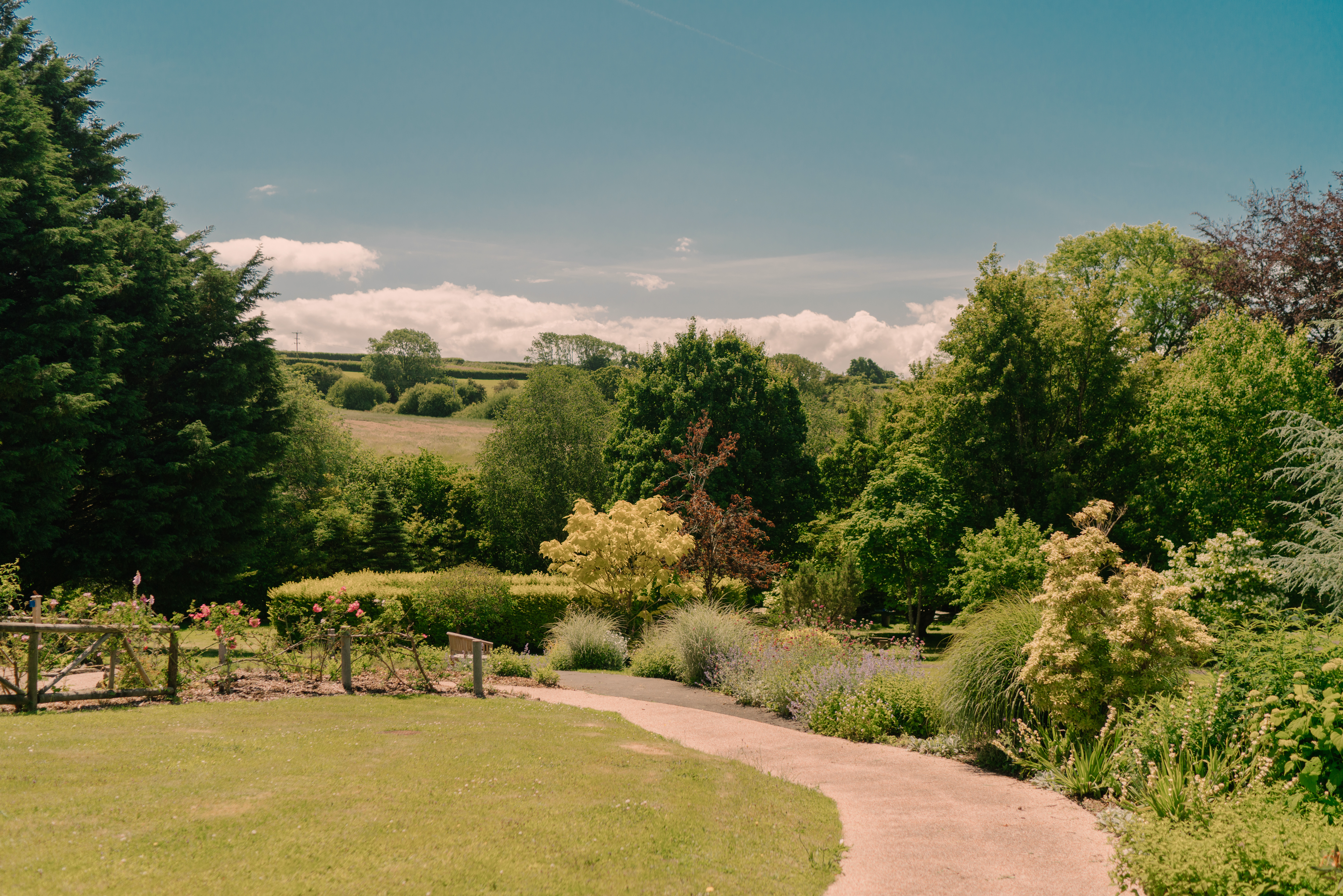
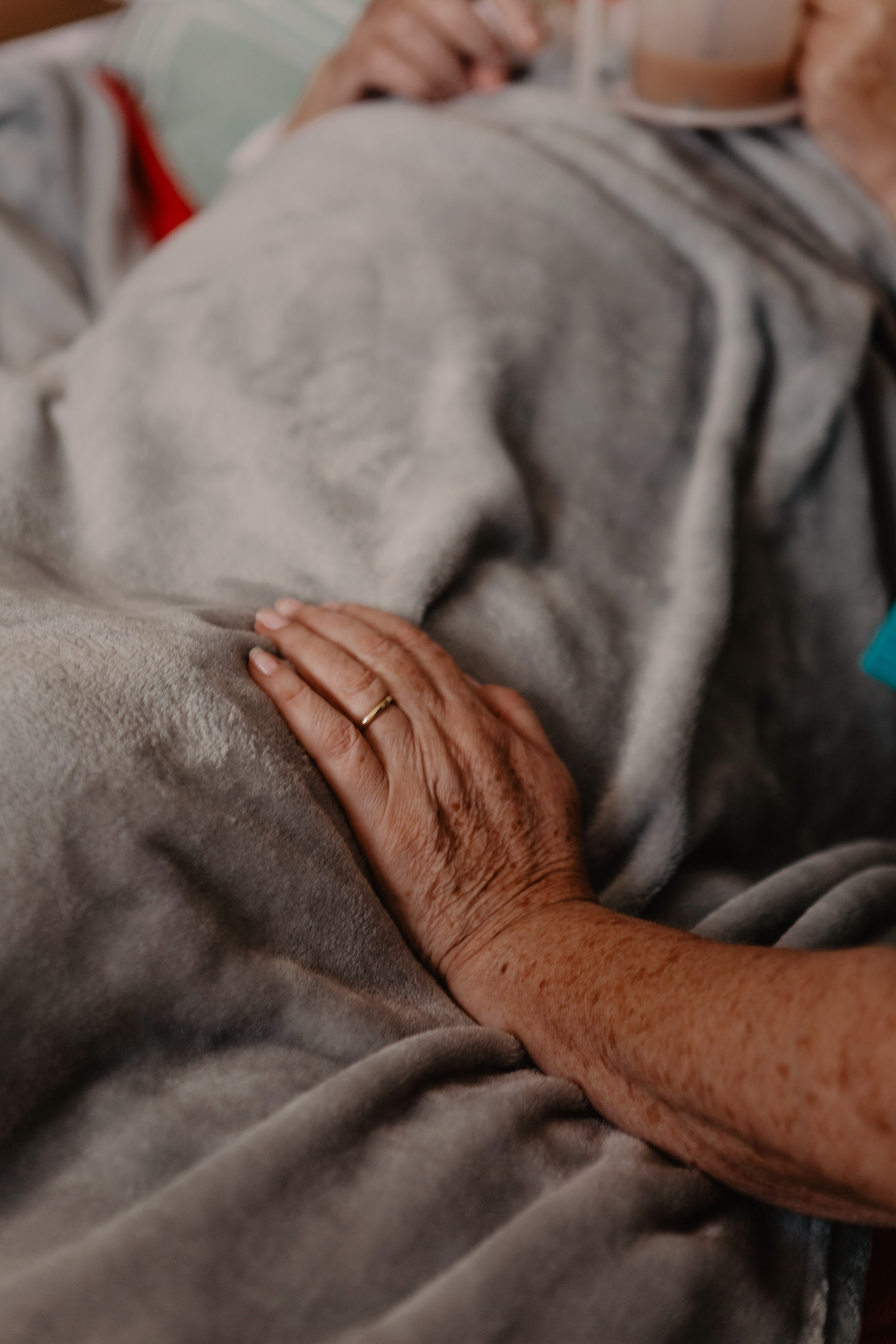
In this video, Mandy, from the Supportive Care team talks about the little changes we can make to boost our immune system and feel healthier in the autumn and winter months...
Follow Mandy's simple massaging techniques video to help release tension and aid with overall wellbeing of the body and mind.
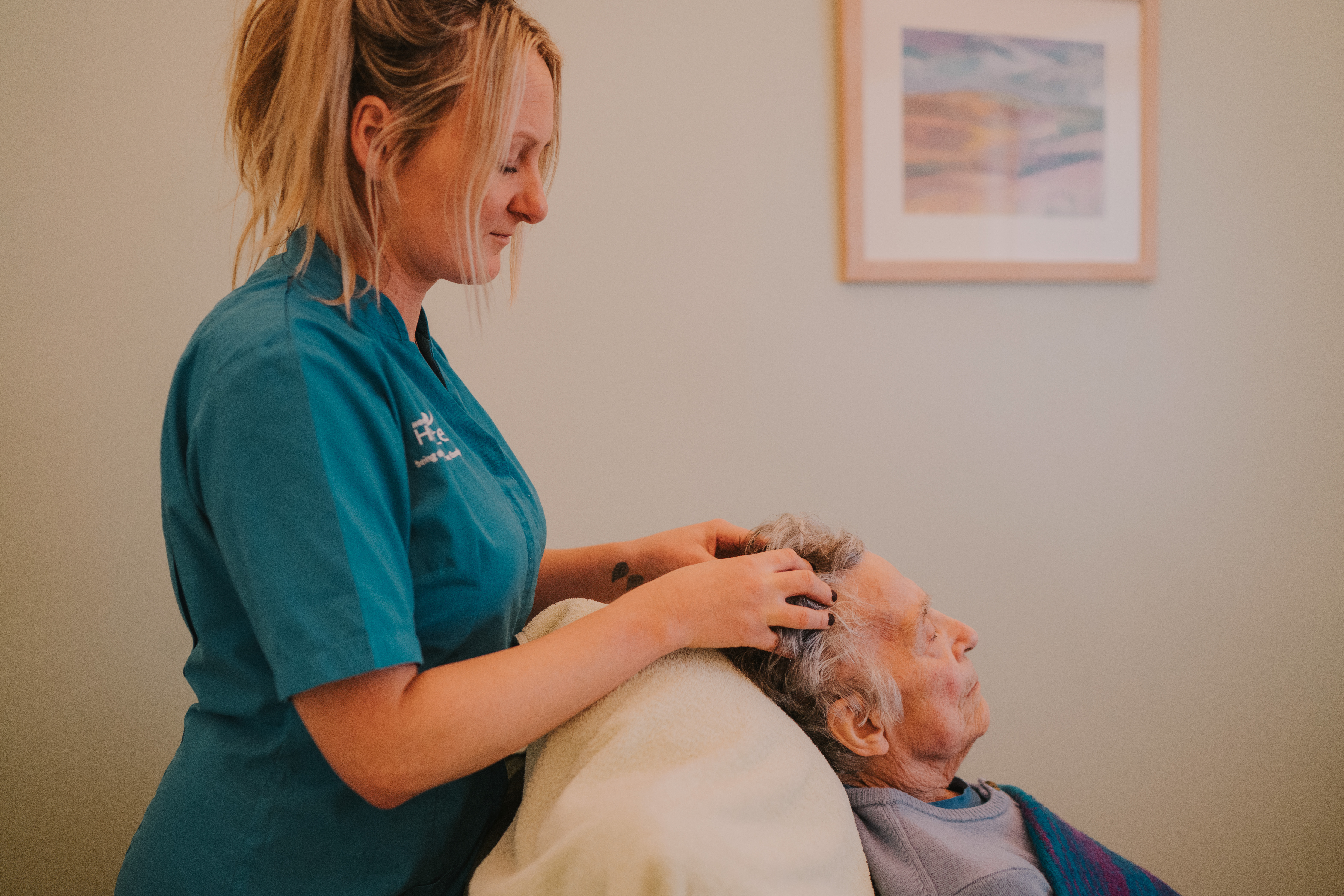
Enjoy this video as a gentle and relaxing way of relieving tension, stress and headaches. A way of taking time for you, using a simple technique.
Please do not attempt this massage if you are suffering with Glioblastoma or have a history of Stroke and Epilepsy.
Breathlessness is not harmful but it can be distressing and exhausting. If your breathing deteriorates so that you are struggling to talk:
If you do experience panic, use the above techniques to control your breathing. Try to practice the following breathing control techniques throughout the day when at rest and use relaxation once or twice a day.
Breathing exercises
Be still…be calm…
Drop the shoulders
Slowly sigh out…and out
Hear the sigh
Haaah…soft and quiet
Feel control returning
Peaceful and safe
It is common for patients who are breathless to use the neck and shoulder muscles to help with breathing. This can serve a purpose at times but can also become an unhelpful habit which, over time, can cause pain and stiffness in the neck and shoulders.
By practising controlled breathing and neck and shoulder stretches, you will use less energy to breathe and help to prevent this pain.
Sitting well supported in an upright chair, legs uncrossed, place one hand on your tummy, just above your belly button. Relax your shoulders and upper chest and rest your elbows by your side. Feel the movement of your tummy as you breathe in and out – try to relax your breathing and feel your upper chest and shoulders relax more as you continue to breathe. Do not try to take deep breaths.
A position to aid recovery from breathlessness
Use this position to help you practise your breathing control, or to recover your breath when you get breathless.
Have your feet slightly apart, about one foot or 30cms away from the wall. Relax your hands down by your sides. If you prefer, rest your hands or thumbs in your waistband or belt loops, or across the shoulder strap of your handbag.
This position can be helpful for most people with a lung condition. Other helpful positions vary depending on whether you have an obstructive or a restrictive lung condition.
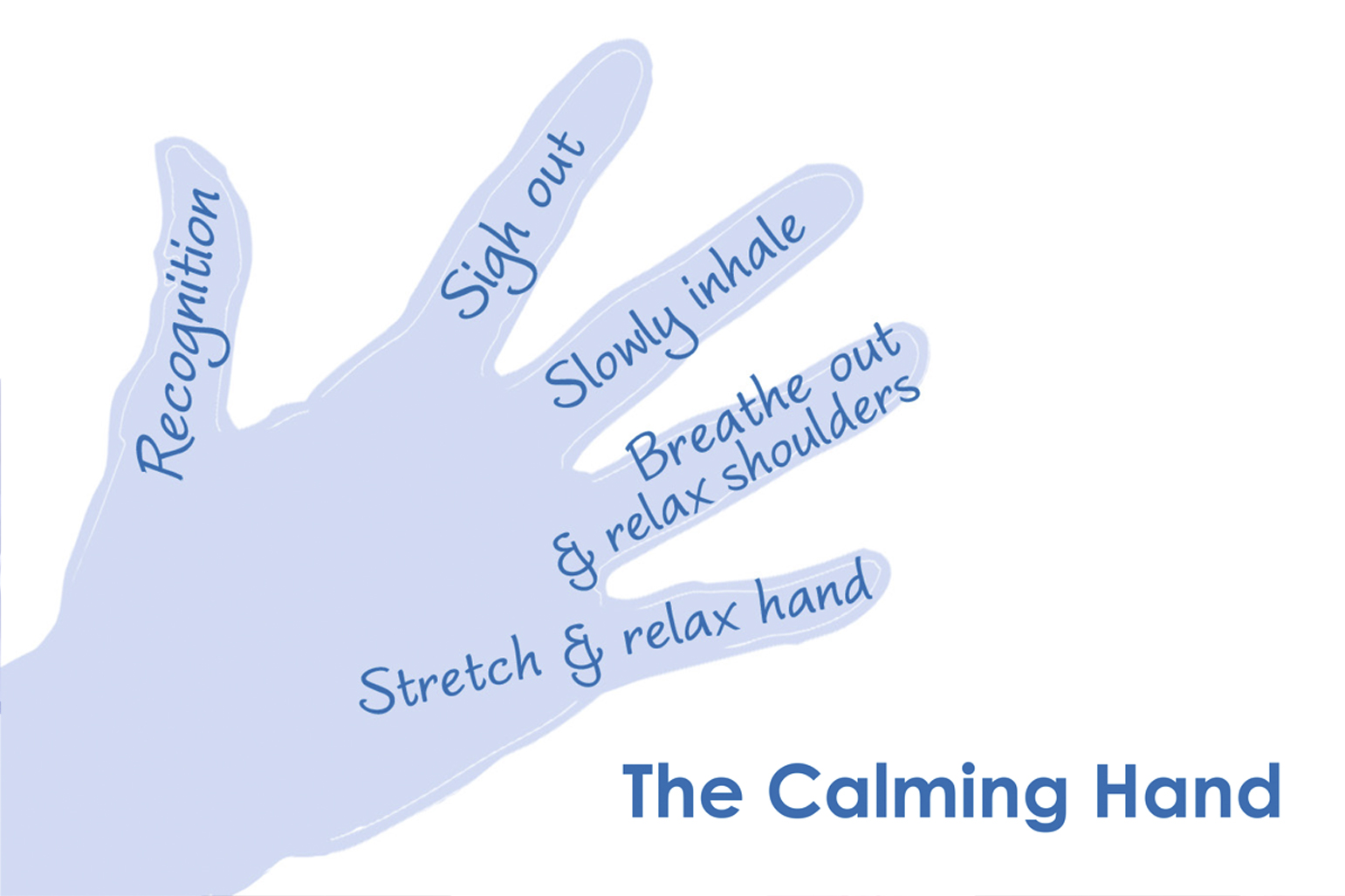
The calming hand is a grounding technique that is suitable for everyone to use.
It can help people to refocus and calm anxiety. By using your own hand as a guide, you can walk through the steps to help you when you need it.
Breathing exercises to practice
Sit comfortably
SIGH OUT
Continue to breathe normally
Place one hand on your chest and one on your abdomen
Think of your shoulders being relaxed
Take a normal breath in and feel your tummy rise
Breathe out and feel your abdomen sink down
The hand on your chest should barely move
Breathe in through your nose and out through your mouth
Try to make your out breath slightly longer
Think breathe in for ONE and out for TWO
As you breathe out think of the word ‘...REST...’
Explore another calming technique
There are other calming and breathing techniques that you can use. For example, as a focus point in your own home, look at an oblong shape; this could be a TV screen, mirror or picture frame. Using this technique look at the top right hand corner and breathe in as you look down to the bottom right hand corner. Breath out slowly as you move towards the bottom left hand corner, which ensures you breathe out for longer. Now breathe in as you work your way up to the top left hand corner. Now breathe out as you work your way back to the top right hand corner.
You can repeat this as many times as you find helpful.
The Cinnamon Trust is specialist national charity for people in their last years and their much loved, much needed companion animals.
A network of 17,000 volunteers “hold hands” with owners to provide vital loving care for their pets. The Cinnamon Trust keep them together – for example, they may be able to walk a dog every day for a housebound owner, they may be able to foster pets when owners need hospital care, they may be able to fetch the cat food, or even clean out the bird cage, etc.
When staying at home is no longer an option, their Pet Friendly Care Home Register lists care homes and retirement housing happy to accept residents with pets, and providing previous arrangements have been made with us we will take on life time care of a bereaved pet.
After the death of a loved one, the complexities of paperwork can seem daunting. This simple step-by-step guide will help you through the process and hopefully reduce some of the anxieties felt at this difficult time.
If your relative dies at the hospice, we will contact the registration office, informing them of the death and giving them your contact details. The registration officer will then hope to contact you within 48 hours. When they contact you, if possible, please have ready the following documents/details of the person who has died:
A simple step by step guide can be found on the Gov website to further assist you at this time.
There are a number of children's books available online about bereavement and grief. Reading books about death can help a child understand what's happened better and realise they’re not alone.
If you are buying for a child, please do check that the book is appropriate for the individual child or young person, taking into account factors such as age, who they have lost and whether they have a particular faith.
Here are a few of our most recommended books:
The Heart and the Bottle by Oliver Jeffers tells the story of a little girl who shuts her heart away in a bottle for safety after the loss of someone close. But after that it seemed that the world was emptier than before.
Michael Rosen's Sad Book tells of his struggles with sadness following the loss of his son Eddie at age 19. A powerful account of grief with illustrations by Quentin Blake. A book for all ages.
Many families have found this book useful when helping children to come to terms with the death of someone close. It tells the story of Badger’s peaceful death and his friends remembering what Badger taught them while he was alive.
The Invisible String looks at how to cope with loneliness and separation from someone you love. Suitable for ages three and above.
Water bugs and dragonflies: explaining death to young children
A storybook which helps to answer some of the questions children might have about death, by telling the story of a water bug who turns into a dragonfly.
Here are some of the books we recommend to adults, to help children navigate the journey of a terminal illness and bereavement.
As big as it gets: supporting a child when a parent is seriously ill
Provides a range of ideas for parents and carers so that they feel able to involve their children in what is happening. The book also includes some suggestions about what parents might say to children and how to offer support.
Grief in children: a handbook for adults
This helps adults understand the different physical and psychological reactions in children when someone dies.
Healing children’s grief: surviving a parent’s death from cancer
This book will help adults better understand how children process grief. The author uses academic research methods to study the mourning process in different age groups, including their changing interactions with family and friends and their support needs.
If there is anything you feel you need support with, please don't hesitate to get in touch with us.
01271 344248